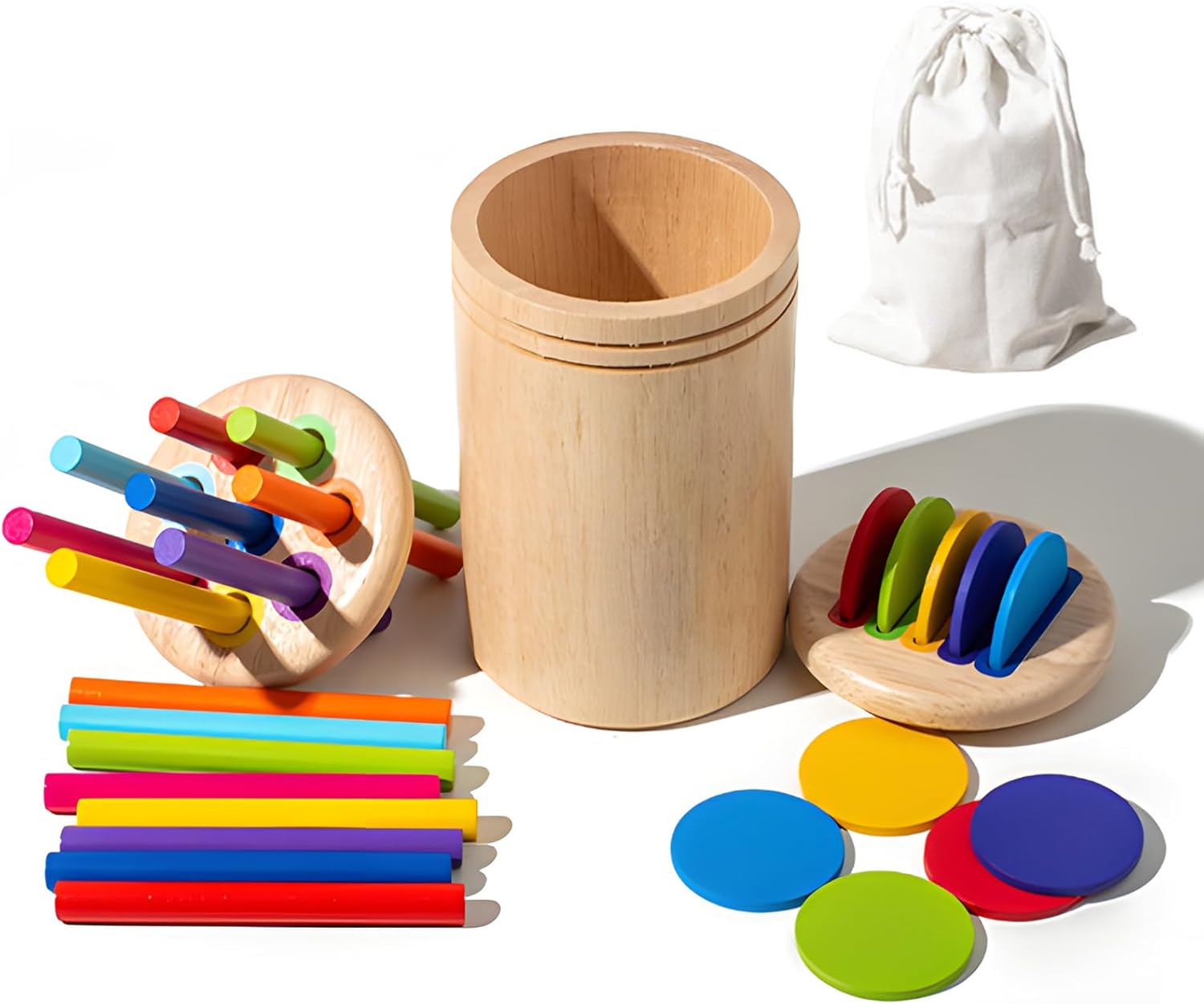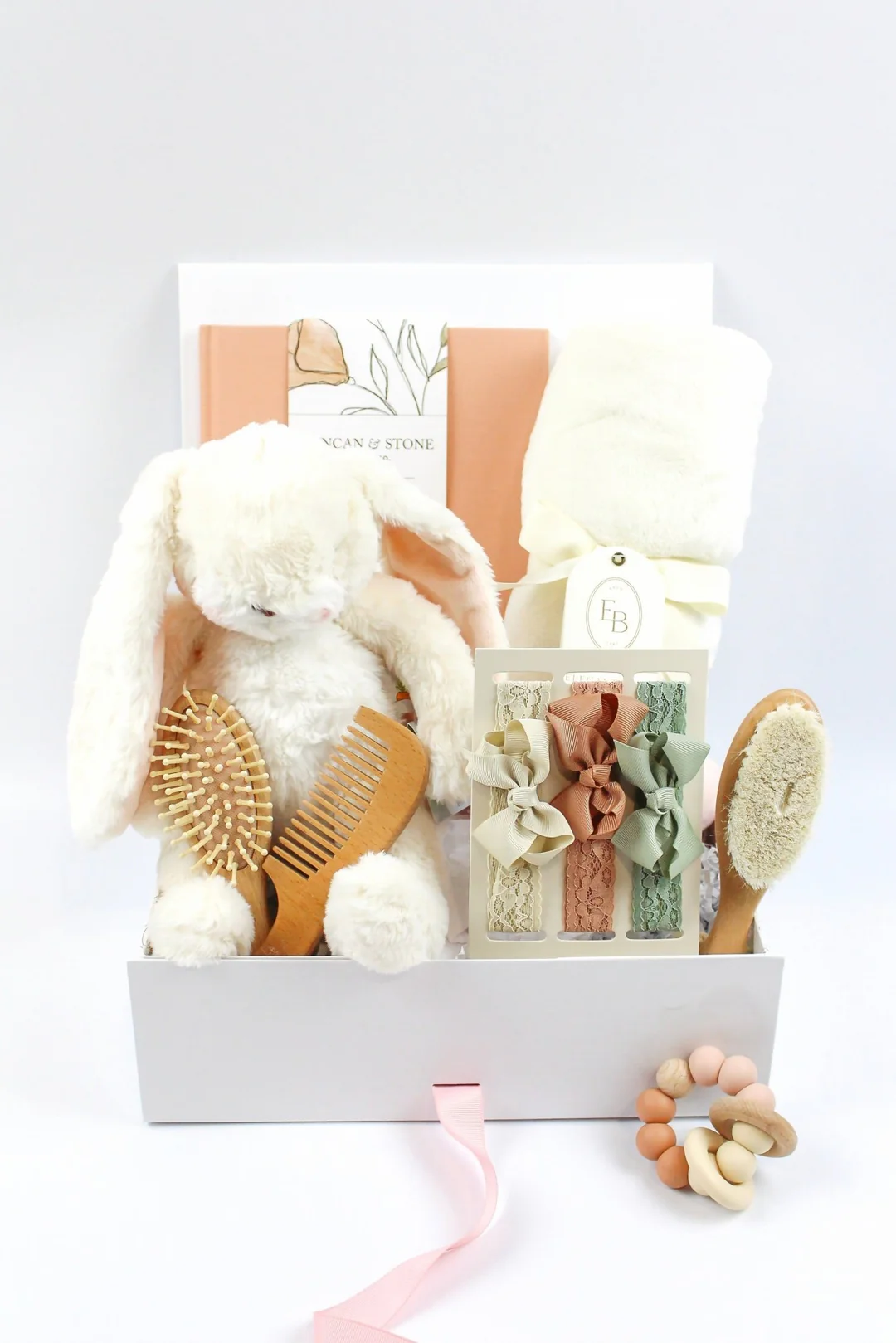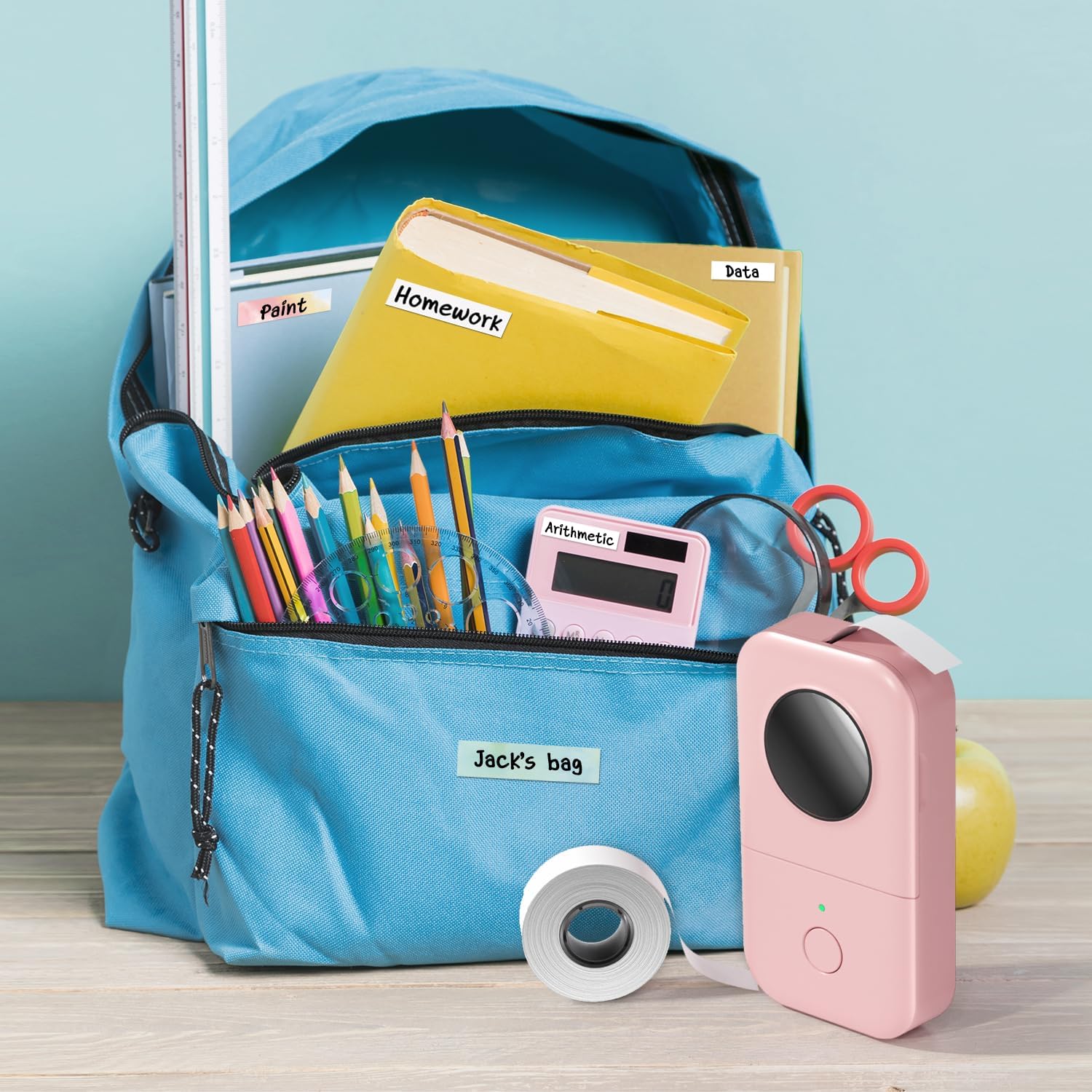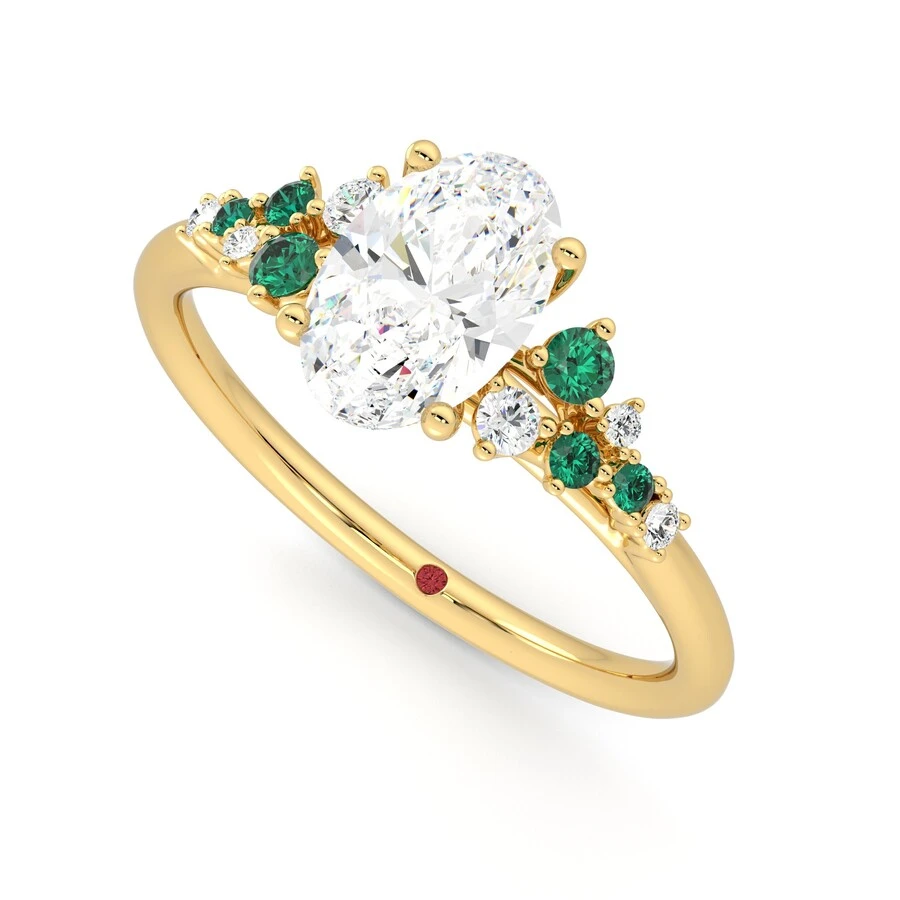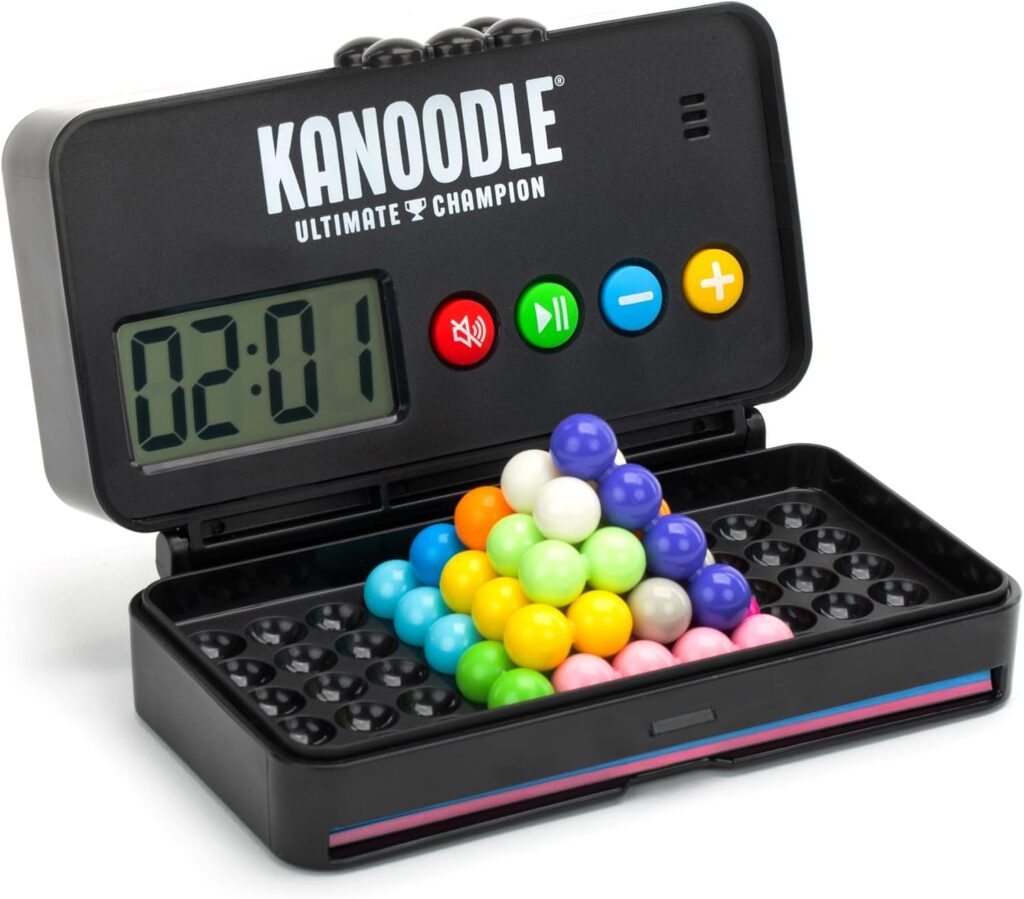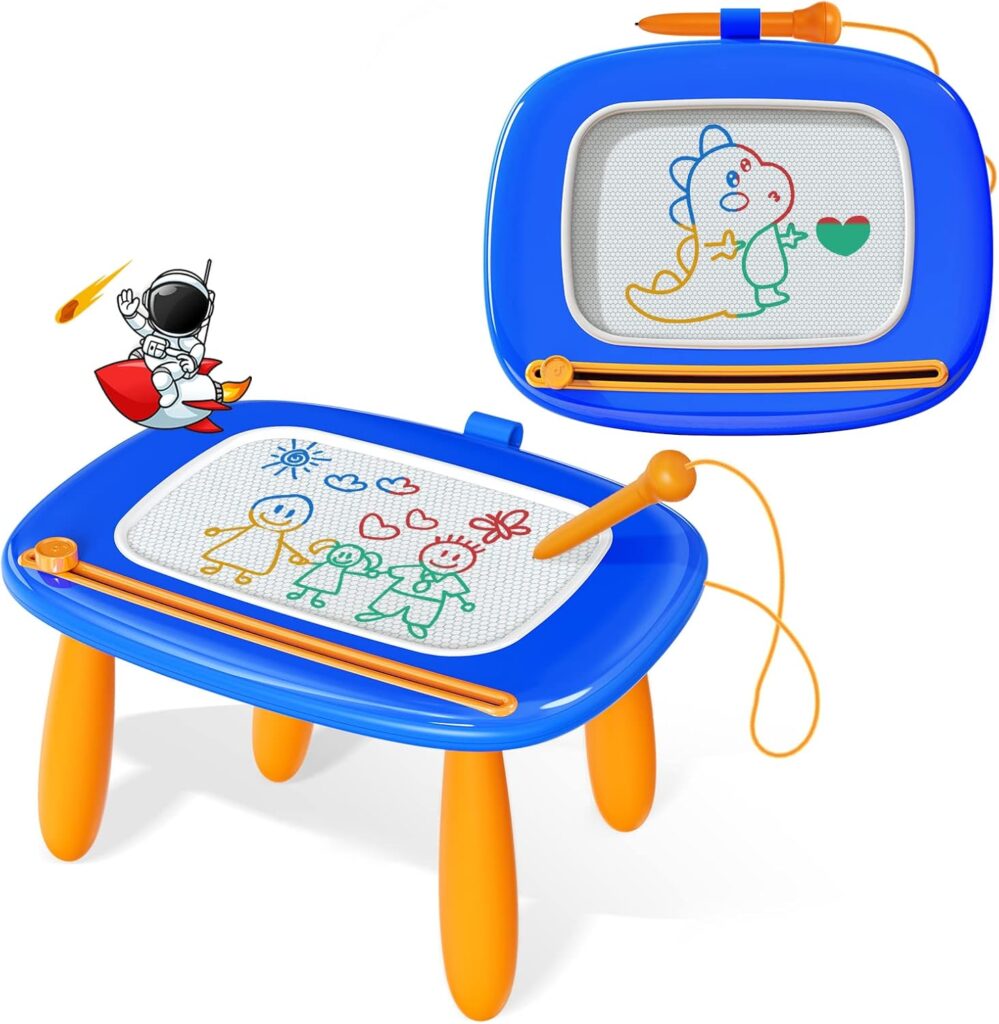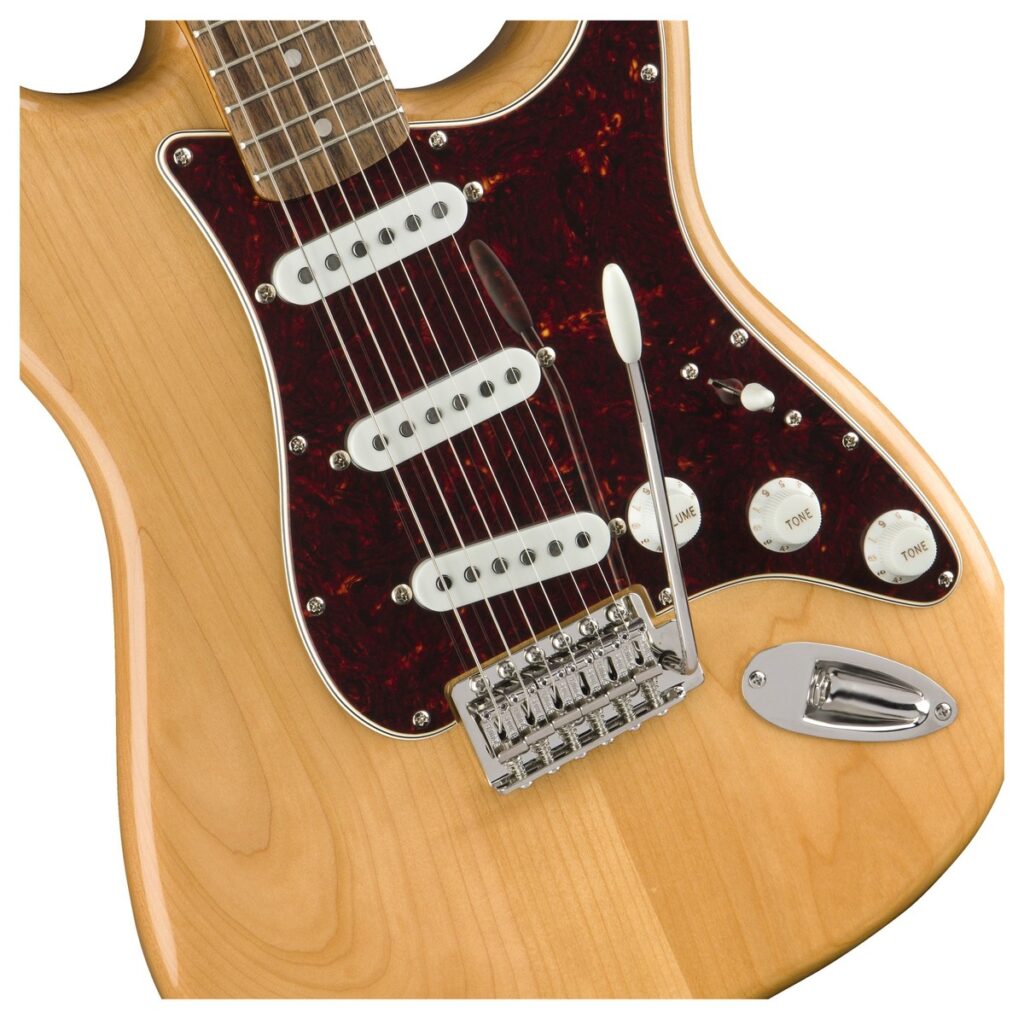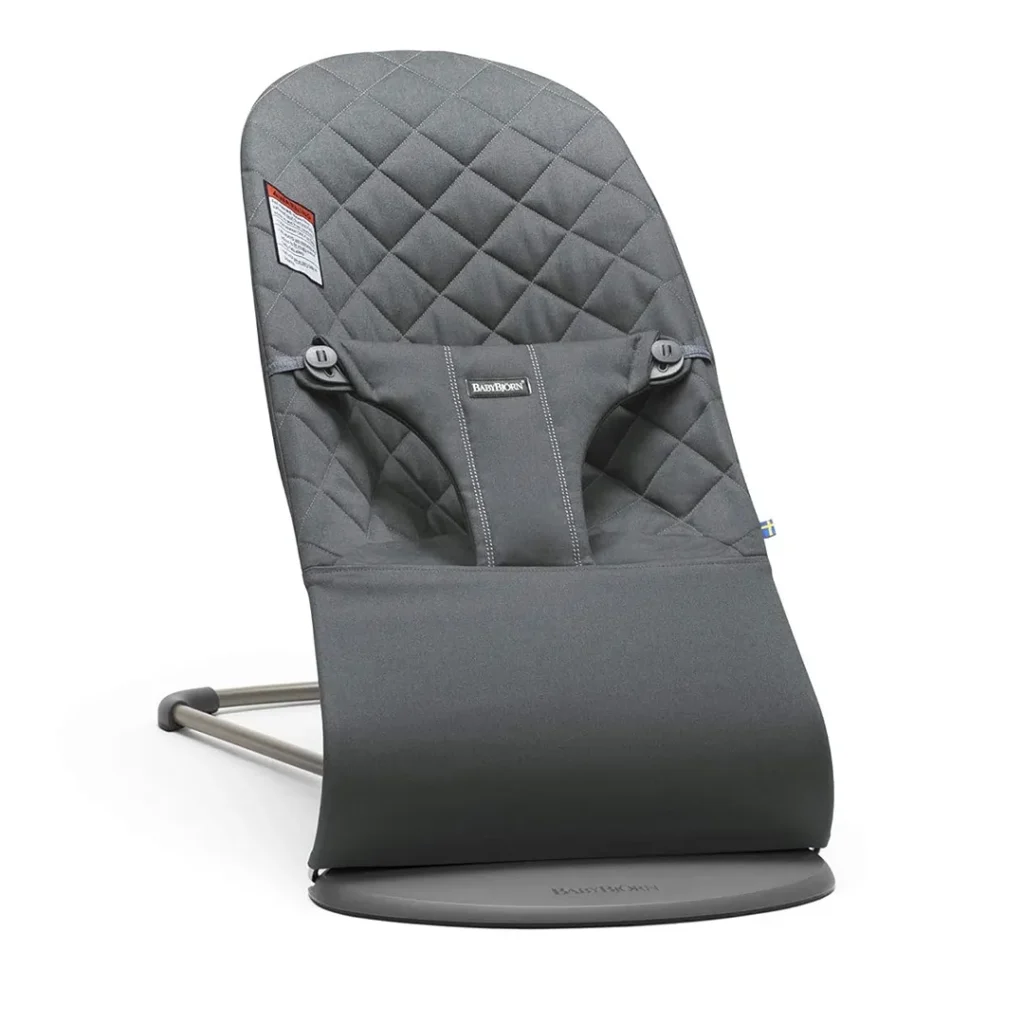Too many toys, not enough play — that’s the paradox in many homes. In this article, we’ll switch from “more stuff” to “better systems” using the CERICAI Montessori Toys set as the backbone of a calmer, more independent play routine. In this article, you’ll learn how to set up a Montessori-style shelf, pick age-smart activities, and run short, repeatable sessions that grow focus, coordination, language, and early math — all without turning your living room into a preschool.
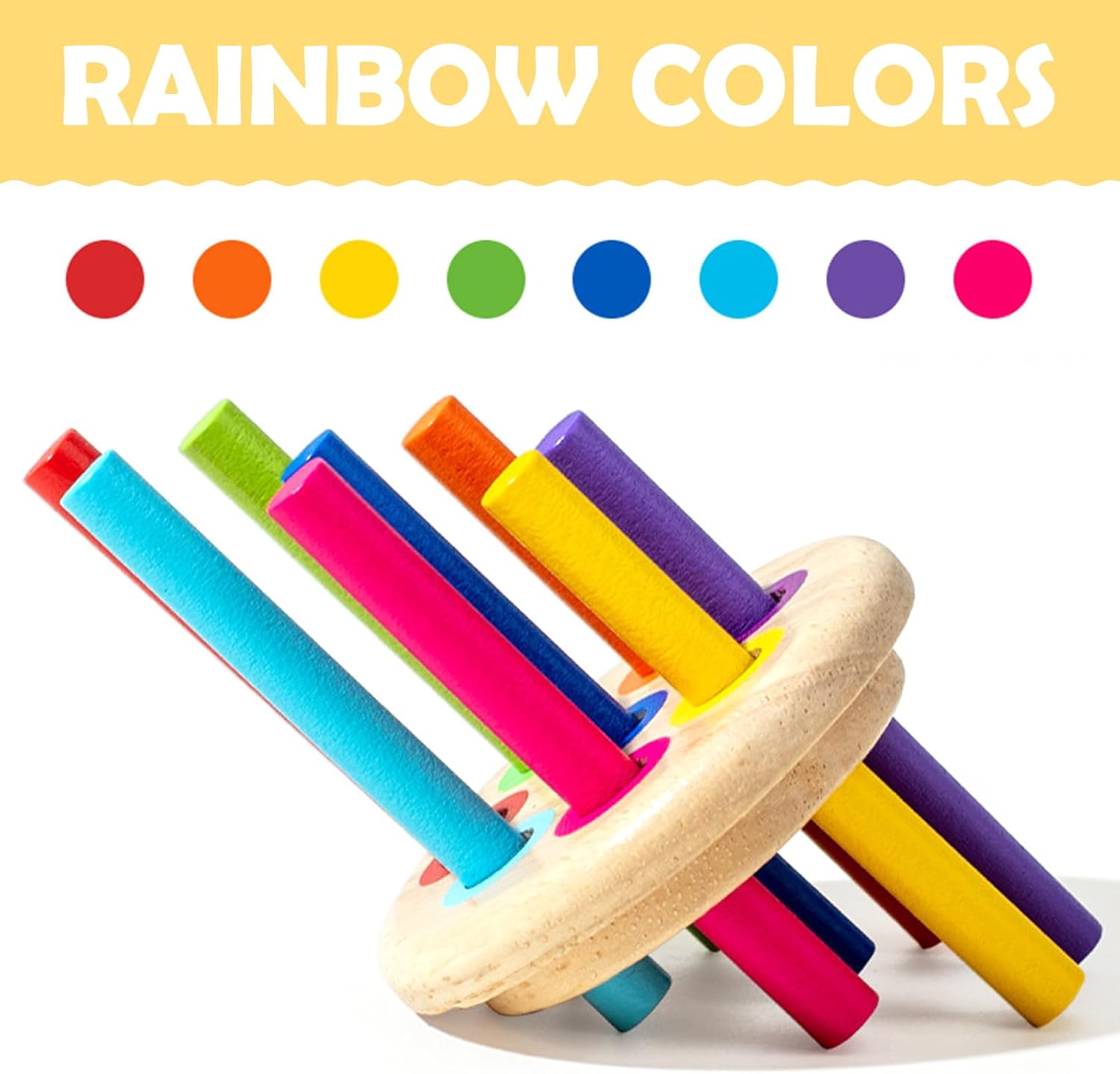
Why Montessori Works (and Why Kids Return to It)
Montessori isn’t about fancy equipment — it’s about clarity. One tray, one task, one obvious outcome. Children see what to do, do it, and see that they did it — a powerful loop that breeds independence. The CERICAI Montessori Toys set leans into that loop with hands-on pieces that ask to be touched, sorted, threaded, stacked, transferred, and put back. When the environment is simple and self-explanatory, kids take the lead. Your role shrinks from entertainer to guide.
Set the Stage: Shelf, Trays, Rhythm
- Shelf: waist-high for the child, no doors.
- Trays: 6–8 at most, each with exactly what’s needed for one activity (and nothing extra).
- Flow: invite → choose one tray → sit at a defined mat → complete → return → choose again (or finish).
The CERICAI Montessori Toys set shines when the setup telegraphs success: minimal choices, visible tools, and a “home” for everything.
The Core Skills Hiding in Plain Sight
- Fine motor & hand strength: pincer grasp (pegs, beads), tripod grip foundations (tongs, crayons).
- Bilateral coordination: two-handed tasks like threading and pouring.
- Visual discrimination: sorting by color/size/shape.
- Executive function: start → persist → finish → tidy.
- Language & math: naming attributes, counting, sequencing, comparing “more/less.”
Every short session with the CERICAI Montessori Toys builds real-world readiness — dressing, eating neatly, classroom routines — without worksheets.
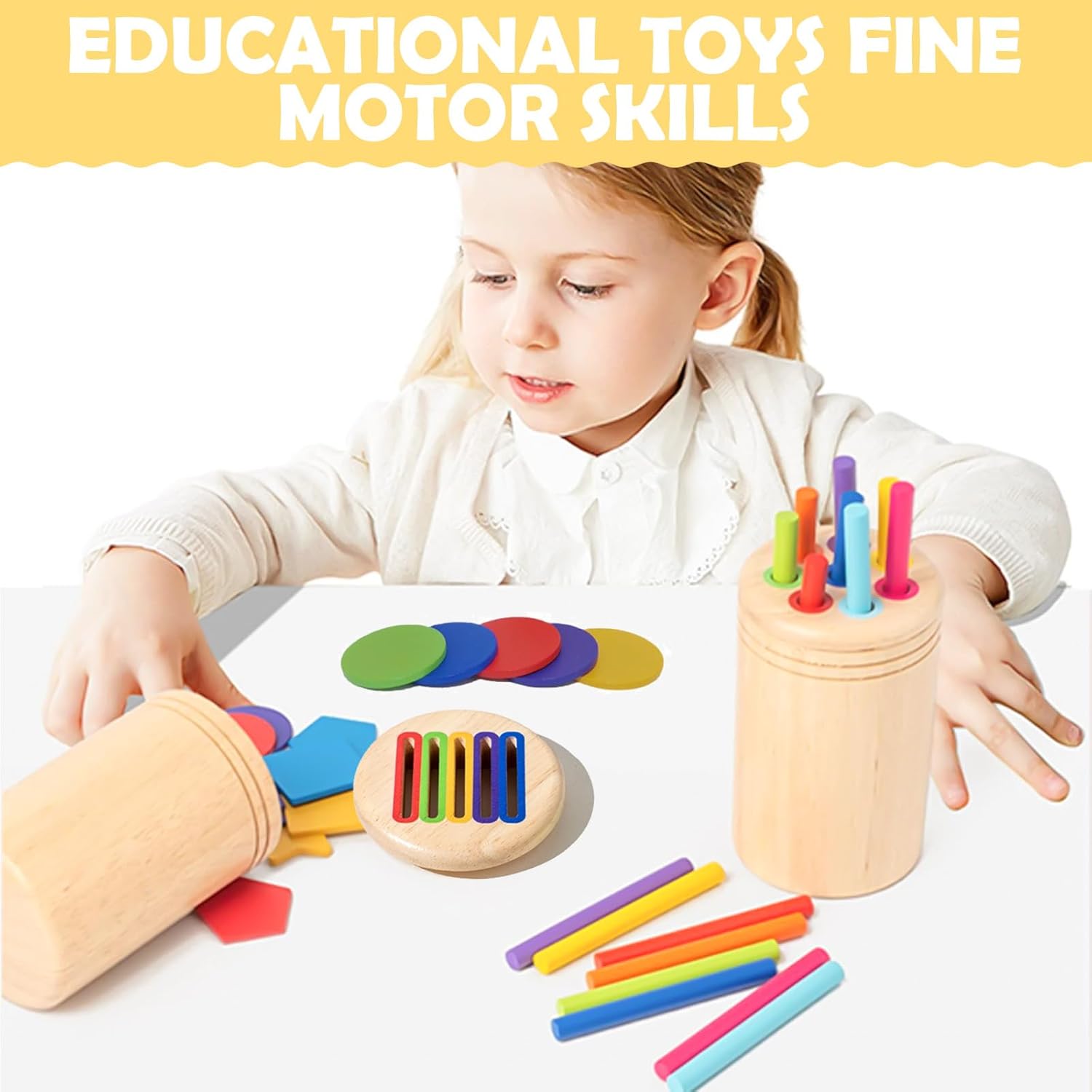
Age-Smart Activity Map
18–24 months: Success through repetition
- Posting & Transferring: a small cup of chunky pegs → one-by-one into a posting box.
- Large Bead Slide: thread 3–4 oversized beads onto a thick cord; stop before fatigue.
- Two-Bowl Transfer: wooden scoop, dry pasta, two bowls; goal is clean transfers, not speed.
The CERICAI Montessori Toys pieces feel satisfyingly solid — toddlers love the weight and sound.
2–3 years: Sorting & matching explode
- Color Sort: three bowls + three colors of counters; name each color as it lands.
- Size Towers: stack by size from biggest to smallest; narrate “tall/short, bigger/smaller.”
- Open–Close Basket: safe containers (zip, snap, twist) with a small object inside each.
Children at this age crave order. The CERICAI Montessori Toys set offers order they can see and create with their own hands.
3–4 years: Sequencing, patterns, early counting
- Pattern Strips: red–blue–red–blue … child completes the line.
- One-to-One Count: place one bead per cup; stop at five, then at ten.
- Practical Life: water pouring with a small pitcher and sponge for spills (kids love the responsibility).
4–5 years: Ready for rules and multi-step tasks
- Tongs Challenge: transfer pompoms by color under a simple timer.
- Shape Lab: sort by attribute (curved/straight sides) and discuss why.
- Sequence Cards: 3-step picture sequences (“wash hands,” “make snack”) to practice ordering and narration.
The 10-Minute Montessori Cycle (Daily)
- Invite (30 sec): “Would you like to choose work?”
- Choose (1 min): the child picks one CERICAI Montessori Toys tray.
- Work (6–7 min): you observe silently, stepping in only if the child is stuck.
- Finish (1–2 min): return pieces to their places, carry the tray back to the shelf.
- Close (30 sec): name one success: “You moved each bead slowly and carefully.”
Short, successful cycles beat long, wobbly ones. End while interest is high; enthusiasm tomorrow is your metric.
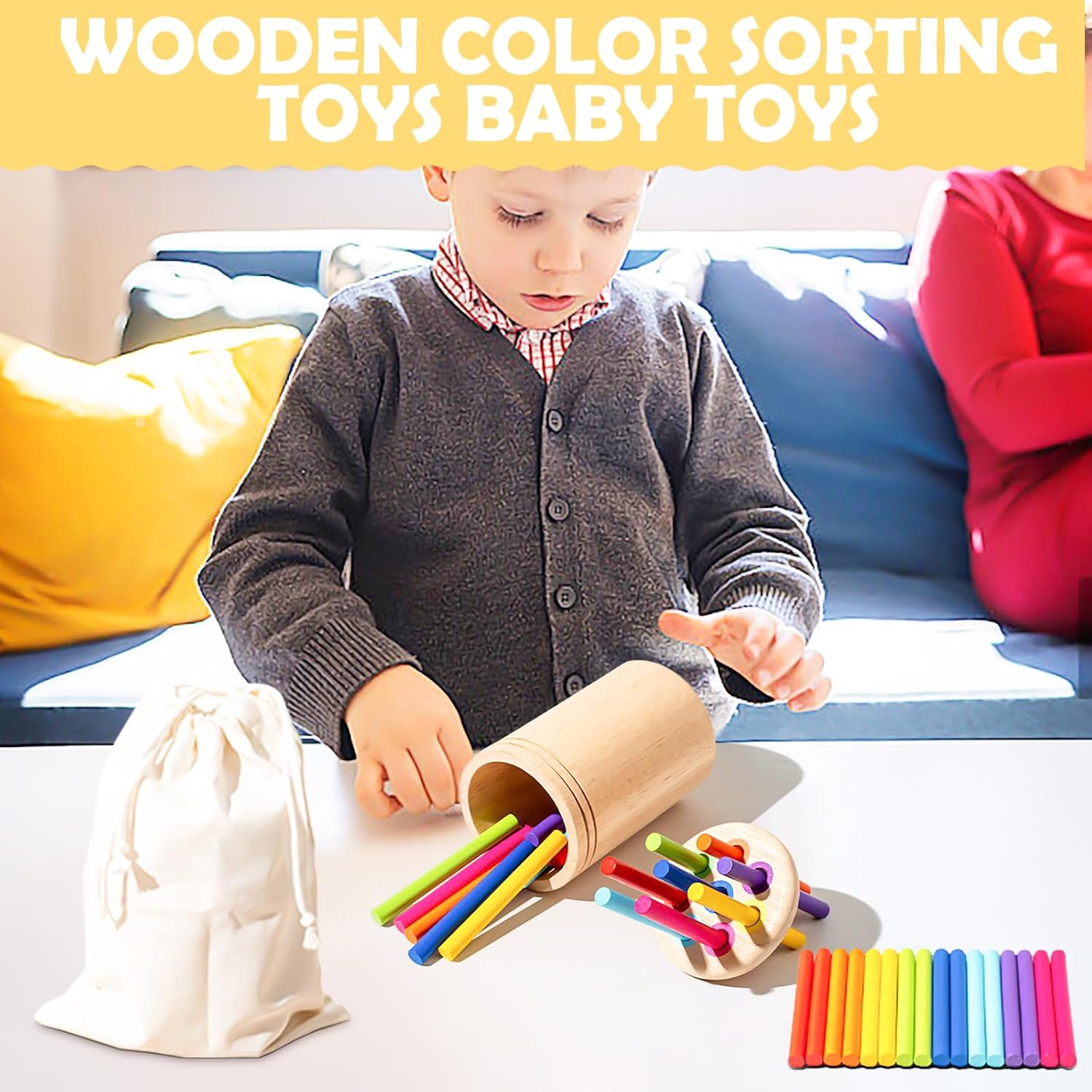
Language Routines That Supercharge Learning
- Three-Period Lesson (quick version):
- This is red. This is blue.
- Give me red. Give me blue.
- What is this? (child answers).
- Attribute Talk: while sorting, model precise words: smooth, rough, curved, corner, edge, heavier, lighter.
- Narrate Process, Not Praise: “You returned every piece to the tray,” vs. “Good job.” Process-focused language grows persistence.
The CERICAI Montessori Toys set becomes a natural anchor for rich vocabulary because the actions are concrete and repeatable.
Sensory & Practical Life: Calm Bodies, Calm Rooms
- Sensory Bin Lite: shallow tray, a thin layer of dry rice or lentils, a small spoon, two cups. Keep quantity low so spills are easy to sweep.
- Care of the Environment: child-sized brush and pan; show a slow sweep into a single pile.
- Care of Self: threading beads to make a “bracelet for snack time,” washing hands before/after.
Montessori kids love responsibility. With the CERICAI Montessori Toys, tidying is part of the activity — not an afterthought.
For Siblings (and Peace)
- Parallel Work: two mats side by side; one tray per child — no sharing mid-task.
- Trade Bell: a soft chime every 7–8 minutes signals tray swap (if desired).
- Cooperative Build: older child sequences pattern strips; younger matches single colors inside the same pattern.
Clear roles + visible boundaries keep play harmonious and your voice out of the referee zone.
Neurodivergent-Friendly Tweaks
- Reduce Visual Load: one-color mat, 1–2 trays on the shelf at a time, not eight.
- Predictable Starts: use a First–Then card: “First beads (5 min), then books (5 min).”
- Sensory Supports: noise-dampening rug, soft lighting, and a consistent spot for each tray.
The tactile clarity of the CERICAI Montessori Toys set often feels regulating: hands busy, brain calm.
Outdoor Extensions (Yes, Please)
- Nature Sort: collect leaves/pebbles; sort by size or color on the same sorting bowls.
- Pour & Transfer Outside: water station with a child jug and funnel — zero stress about spills.
- Chalk Patterns: copy your indoor pattern strips on paving stones; kids place natural items to complete sequences.
Montessori isn’t a room — it’s a rhythm. The CERICAI Montessori Toys pieces move easily between spaces and seasons.
Troubleshooting Real Life
- “They dump the tray.” Offer less material (half the beads). Model slowly once, then step back.
- “They hop between activities.” Start with just two trays on the shelf; add a third next week.
- “They resist clean-up.” Build the rule into the invitation: “Choose work, then return work.” Use a soft timer and finish together for a few days.
- “It’s too easy now.” Increase one variable: smaller beads, tongs instead of fingers, add a simple pattern to copy.
Iterate the challenge; keep the success rate high. The CERICAI Montessori Toys set grows with your child when you change the constraints, not the whole kit.
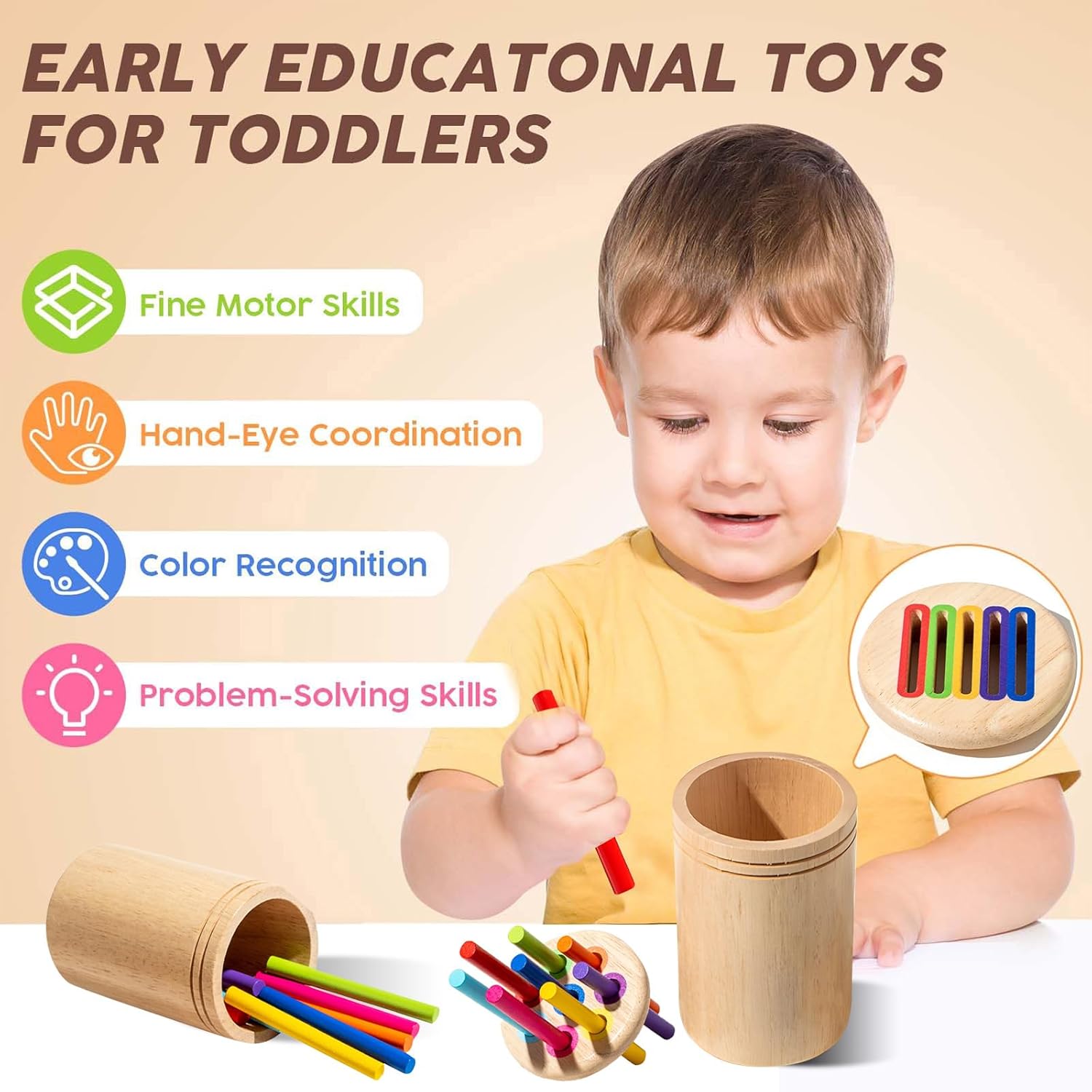
Your 20-Minute Setup (Tonight)
- Clear one shelf and place a neutral mat on the floor.
- Prepare 4 trays using the CERICAI Montessori Toys pieces:
- Tray 1: color sort (three bowls, three colors).
- Tray 2: large-bead threading (cord + 6 beads).
- Tray 3: two-bowl transfer (dry pasta + spoon).
- Tray 4: size stack (largest → smallest).
- Take a photo of each “finished tray” and tape it under the tray — kids match the picture when tidying.
- Tomorrow, invite one cycle after snack; end while they’re still engaged.
Care & Storage
Return small parts to cloth pouches; wipe wooden pieces with a barely damp cloth; let air-dry. Rotate trays weekly: store “resting” activities in a lidded box so novelty returns without buying more. The CERICAI Montessori Toys set is durable — little, regular care keeps it looking and feeling special.
Conclusion
Independent play is a skill — and skills grow in clear, repeatable environments. With simple trays, a low shelf, and short daily cycles, the CERICAI Montessori Toys set becomes more than “toys”: it’s a quiet framework for focus, coordination, language, and pride. Start small, keep choices few, and celebrate process over product. The result is a child who chooses meaningful work, finishes what they start, and returns tomorrow asking for more — because success feels good, and they can feel it in their own hands.
FAQ
- What ages is the CERICAI Montessori Toys set best for?
Roughly 18 months to 5 years, with activity tweaks (bigger parts and short cycles for toddlers; patterns, tongs, and sequencing for preschoolers). - How many trays should I put out at once?
Start with 3–4. Too many choices dilute focus; add one more only after your child completes and returns trays reliably. - How long should a session last?
8–12 minutes is ideal. Multiple short cycles across the day beat one long, meltdown-prone stretch. - Can siblings use the same set?
Yes — set parallel mats and offer different levels of the same activity (fingers vs. tongs, single-color sort vs. pattern copy). - What if my child throws pieces?
That’s communication. Step down the challenge, reduce quantity, model once slowly, and end the cycle early on success. - Do I need special furniture?
No. A low shelf or even the bottom two shelves of a bookcase work. The key is visibility and a consistent “home” for each tray. - How do I keep interest high without buying more?
Rotate weekly, change one constraint (size, tool, timer), and take a short “rest” week for any tray that’s been out too long.

